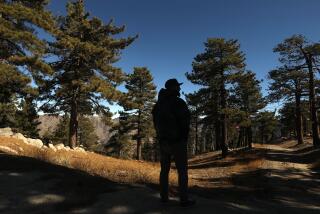Tilting at mills
- Share via
The owners of the defunct Broughton lumber mill on the windsurfing-crazed Columbia River Gorge envision a 68-acre resort on their site that opponents say would spoil the federally protected shoreline along the choppy waters separating Oregon and Washington.
Resort backers argue that the Columbia River Gorge National Scenic Area Act allows the conversion of old industrial structures into new commercial uses — in this case a motel, a shopping center, campsites, motor-home hookups and 79 condominium units.
“If [conservationists] wish to enhance the visual qualities of that particular area,” said mill consultant Stephen Andersen, “they would allow the conversion of some dilapidated — or dilapidating — building into a premier recreation destination that would be done in a very environmentally sensitive and quality manner.”
But the proposed complex sits two miles from the nearest designated high-density area. Michael Lang, conservation director of Friends of the Columbia Gorge, said it’s “inconsistent with the National Scenic Act, and it can’t be allowed.”
Lush forests, bridal-veil waterfalls and towering cliffs frame the gorge, which massive floods gouged out at the end of the last ice age. The only sea-level gap in the Cascade Range, it forms a pressure release valve for weather systems on either side of the range. That translates into strong, steady winds.
Once the bane of loggers and growers, wind now draws people with their boards and sails from around the world, propelling the shift from a logging to a tourism-based economy. An estimated 1 million windsurfers sail the gorge annually, according to the Columbia Gorge Windsurfing Assn.
Former pro windsurfer Bruce Peterson chased the wind here 20 years ago fresh out of high school in Victoria, British Columbia. The unique conditions — 40-mph winds, 10-foot waves, salt-free water and easy access — proved irresistible. He initially fed himself by repairing windsurfing equipment and now runs a business making sails for the sport.
Peterson believes mill redevelopment would improve recreational access to the river. The site lies across the river from the windsurfing mecca of Hood River, Ore., and adjacent to a fish hatchery, one of the top launch spots. “Windsurfing at the fish hatchery is a serious adrenaline fix,” Peterson said. “People are addicted to it. They rearrange their lives around it. It’s a very, very focused and intense experience.”
But windsurfer Christine Knowles, who lives across the river from the hatchery and the mill, said more windsurfers “could wreck the experience, not enhance it.” “On a Saturday morning we get out our binoculars and look across the river, and if the parking lot is filling up we have to rush over,” she said. Knowles favors developing less-known sites nearby — and within areas specifically designated for high-density development.
The Columbia River Gorge Commission, which administers the Columbia River Gorge National Scenic Area Act, says it’s understaffed and won’t consider rezoning the area for commercial and residential use until January at the earliest.
Meanwhile, Knowles frets about the outcome. “I think you could go windsurfing on the Texas coast and look at oil refineries,” she said, “but it’s not the same experience.”






